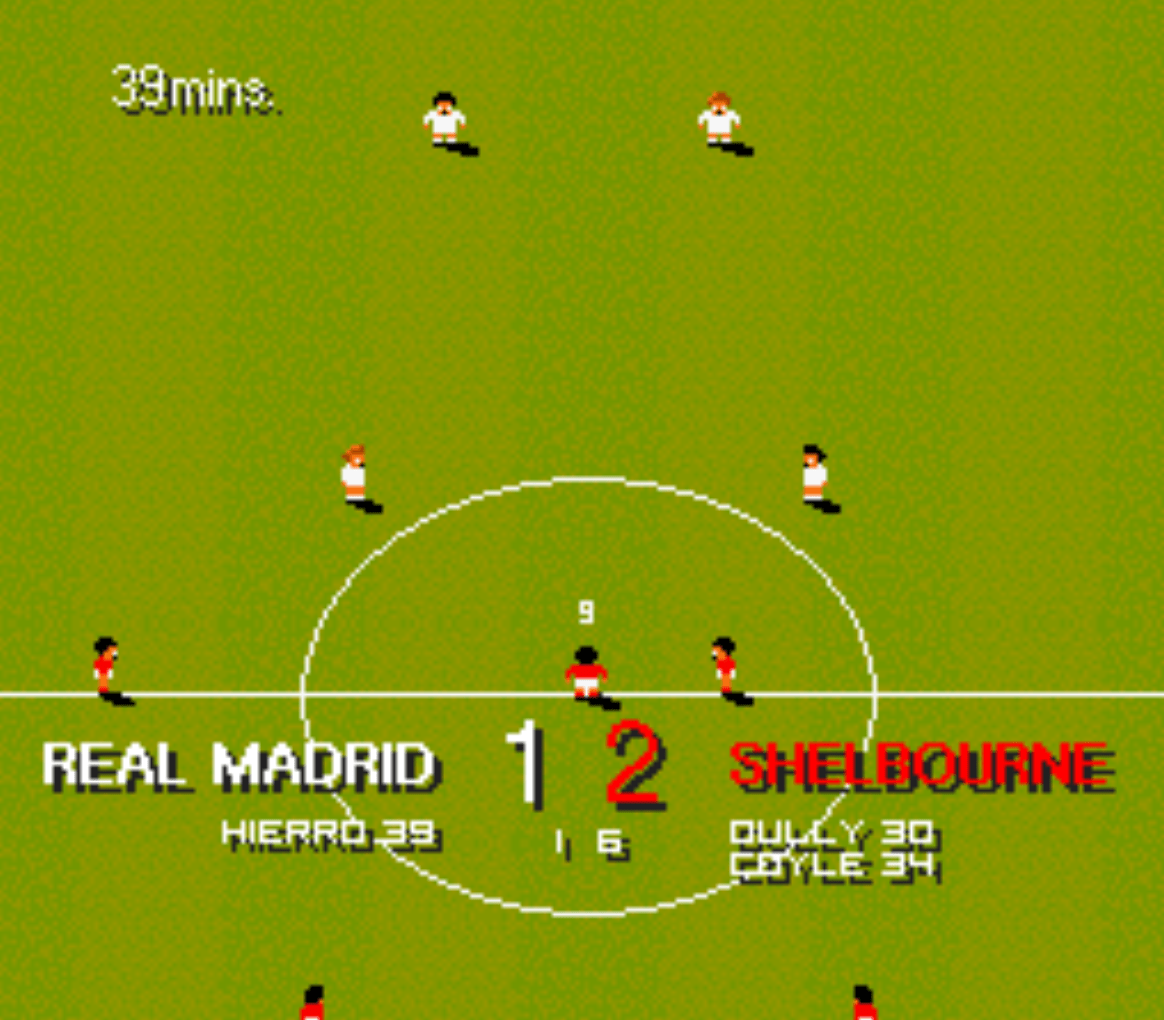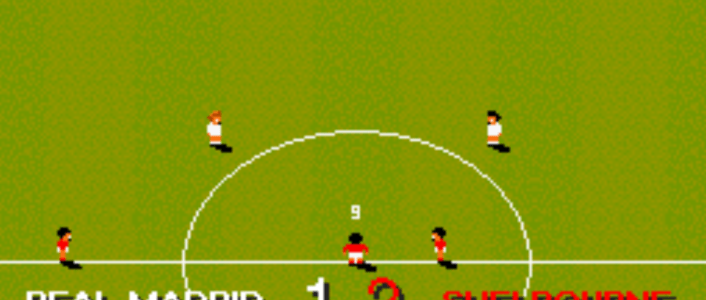From the pixelated pitches of the 1980s to the immersive football simulations at the turn of the millennium, football computer games have played a pivotal role in shaping the world of sports gaming. The period from 1980 to 2000 witnessed rapid technological advancements, and football games transformed from simple arcade experiences into complex simulations, offering players a more authentic and engaging football experience. This article will explore the key developments in early football computer games, focusing on both player-controlled and manager-style games.
1. The Dawn of Football Computer Games (1980-1985)

Football Manager (1982)
One of the earliest and most influential football management games, Football Manager, was released in 1982 by Kevin Toms for the ZX Spectrum. It stood out as one of the first games to give players the chance to manage their own football team. Unlike action-oriented player-controlled games, Football Manager allowed players to take on the role of a football coach, managing tactics, transfers, and other behind-the-scenes elements of a football club.
Football Manager’s simplistic interface and design, featuring text-based decision-making, may seem rudimentary by today’s standards, but at the time, it was revolutionary. It introduced a new way for football fans to engage with the sport, focusing not on controlling players during matches but on making strategic choices that affected team performance over time.
International Soccer (1983)
Commodore 64 was one of the most popular home computers of the early 1980s, and one of its standout sports titles was International Soccer (1983). This game was groundbreaking as it was one of the first football games to provide side-scrolling gameplay, allowing players to control individual footballers on the pitch in real time.
The graphics, though basic by modern standards, were a leap forward for the time. Players could run, shoot, and pass, albeit in a simplified format. The game allowed two players to compete against each other, an early attempt at multiplayer gaming in the football genre.
Atari Soccer (1980)
Atari Soccer (1980) also deserves a mention. As one of the first football arcade games, it provided a top-down view of the football field and gave players control over simplified blocky avatars. While limited by the technology of the time, Atari Soccer laid the foundation for future football games by incorporating competitive multiplayer gameplay and introducing a timed match format that mirrored the real sport.
2. The Expansion of Football Games (1985-1990)
Kick Off (1989)
The late 1980s saw a major shift in football video games with the release of Kick Off in 1989. Developed by Dino Dini and released for the Amiga and Atari ST, Kick Off revolutionized the way football was represented in video games. It introduced a fast-paced, top-down view of the action and allowed players to have more control over the ball than ever before. The game’s innovative ball control system made it challenging, as the ball didn’t stick to the player’s feet like in earlier games, requiring skill and timing to master dribbling and passing.
Kick Off’s realism and fast pace gained it a cult following, and it became a foundational game for the football genre. Its influence would be seen in later football games that focused on providing a more authentic football experience.
MicroProse Soccer (1988)
A year before Kick Off, MicroProse Soccer (1988) was released, also for the Commodore 64 and other platforms. It featured similar top-down gameplay but added elements like weather effects (rain) and a more robust tournament system. MicroProse Soccer was a spiritual predecessor to Sensible Soccer and had more arcade-like gameplay than the simulation focus that Kick Off would introduce.
3. The Sensible Revolution (1990-1995)

Sensible Soccer (1992)
In 1992, football gaming changed forever with the release of Sensible Soccer, developed by Sensible Software. Building upon the top-down view popularized by games like Kick Off, Sensible Soccer introduced a more user-friendly control scheme and fluid gameplay. Its quirky, small-headed players became iconic, and it was celebrated for its emphasis on fast-paced, arcade-like action.
The game stood out for its depth of tactics, customization, and accessibility. Sensible Soccer allowed players to manage team line-ups and formations while still being able to enjoy quick, dynamic matches. This blend of tactical management and on-pitch gameplay made it immensely popular.
Sensible Soccer also laid the groundwork for the next few years of football games. The release of sequels such as Sensible World of Soccer (1994), which added career mode and deeper team management features, kept the series relevant and influential throughout the early 1990s. Sensible Soccer is still remembered fondly by retro gaming fans today and is considered one of the greatest football games of all time.
4. The Rise of Licensed Football Games (1995-2000)
By the mid-1990s, the gaming industry was rapidly changing with the advent of 3D graphics and more powerful consoles. This period saw the rise of licensed football games, bringing real players, teams, and leagues into the virtual realm.
FIFA International Soccer (1993)
The FIFA franchise, developed by EA Sports, began its life in 1993 with the release of FIFA International Soccer. It was the first football game to be officially licensed by the sport’s governing body, FIFA, and it featured national teams with realistic player names and team kits. The game employed an isometric viewpoint, which was novel for football games at the time, offering a more immersive experience than the top-down perspective used in earlier games.
FIFA International Soccer was notable for introducing smoother animations, better ball physics, and crowd noise, creating a more atmospheric experience. The game was a commercial success and led to annual releases, establishing the long-running FIFA series as a dominant force in football gaming.
Actua Soccer (1995)
In 1995, Actua Soccer became one of the first football games to utilize 3D graphics, marking a significant shift in the genre. Developed by Gremlin Interactive, Actua Soccer offered polygonal players and stadiums, a first for the time, and it boasted motion-captured animations that added to the game’s realism. While the gameplay was criticized for being somewhat stiff, the game’s graphical advancements set it apart from its competitors and pointed toward the future of football games.
Premier Manager Series (1992-1999)
While player-controlled games were becoming increasingly sophisticated, football management games were also making great strides during this period. The Premier Manager series, which debuted in 1992, was one of the first football management games to incorporate real-life leagues and players. It allowed players to control every aspect of a football club, from transfers and tactics to finances and stadium improvements. The series remained popular throughout the 1990s, with its mix of depth and accessibility appealing to both casual and hardcore football fans.
Championship Manager (1992)
Perhaps the most significant development in football management games came in 1992 with the release of Championship Manager, developed by brothers Paul and Oliver Collyer. Initially released on the Amiga and Atari ST, Championship Manager was notable for its comprehensive database of players and teams, allowing players to manage clubs in various leagues around the world.
As the series progressed, it became more complex and realistic, with each iteration adding new features such as player scouting, youth development, and tactical flexibility. By the end of the 1990s, Championship Manager had firmly established itself as the premier football management simulation, laying the foundation for its evolution into the Football Manager series in the 2000s.
5. Pro Evolution and the Battle for Dominance (1995-2000)

ISS Pro Evolution (1999)
In the late 1990s, Konami’s ISS Pro Evolution (1999) emerged as a serious contender to FIFA’s dominance in the football gaming market. The ISS (International Superstar Soccer) series had been around since the early 1990s, but it was with ISS Pro Evolution that Konami truly made its mark. The game was praised for its fluid gameplay, realistic animations, and depth of control, offering a more tactical and skill-based experience compared to the more arcade-like feel of FIFA at the time.
ISS Pro Evolution laid the groundwork for what would later become the Pro Evolution Soccer series, which would go on to challenge FIFA’s dominance throughout the 2000s. The rivalry between FIFA and Pro Evolution would become one of the defining battles in sports gaming for the next decade.
6. The Transition to the New Millennium (2000)
By the year 2000, football games had evolved dramatically from their humble beginnings. The technological advancements of the 1990s, including 3D graphics, motion capture, and the introduction of real player names and teams, had transformed the genre. Football management games had become deeper and more realistic, while player-controlled games offered greater immersion and authenticity.
FIFA 2000 (1999)
At the cusp of the new millennium, FIFA 2000 was a significant release for EA Sports. Building on the success of previous iterations, FIFA 2000 featured improved graphics, expanded league licenses, and the inclusion of classic teams, allowing players to control legendary squads from the past. The game was also released on multiple platforms, including the PlayStation and PC, solidifying FIFA’s position as the dominant football game franchise heading into the 2000s.
Championship Manager 99/00
For fans of football management games, Championship Manager 99/00 represented the pinnacle of the series up to that point. The game’s detailed database, realistic transfer market, and tactical depth made it a must-play for football enthusiasts. Championship Manager had now fully matured into a complex, yet accessible, management simulation that would go on to inspire countless imitators and successors.
Conclusion
The period between 1980 and 2000 was a transformative time for football video games. From the simple, pixelated pitches of early arcade games to the realistic, licensed football simulations at the dawn of the 21st century, football gaming evolved in tandem with technological advancements. Games like Kick Off, Sensible Soccer, FIFA International Soccer, and Championship Manager helped to define the genre, creating a legacy that continues to shape football games to this day. Whether you preferred controlling players on the pitch or managing teams from the dugout, this era of football games offered something for everyone, laying the foundation for the incredible football gaming experiences we enjoy today.

